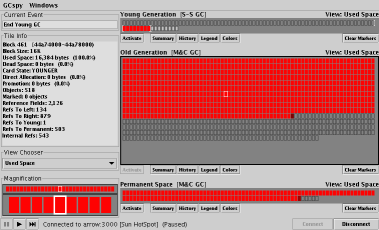I see over at JavaSound Interest archive that Florian Bomers (aka Mr. JavaSound) has left Sun. Florian says:
Hi Javasounders!
I have left my position at Sun. I've had sufficient time (and I worked
until the last minute) to ensure that Java Sound in 1.5 is in good
shape, and that my successor will find enough and complete information
for a smooth start. I also offered Sun to assist where needed. I
wouldn't want Java Sound to receive less attention than before!
The decision to leave is part of my original plan to stay at Sun for the
duration of the development cycles of 1.4.1, 1.4.2 and 1.5.
Now I will take up my own business, in the field of music software (but
a specific plan is not yet set in stone). I will continue my engagement
with this mailing list, and I plan to increase my activity for the
tritonus and jsresources.org projects.
Therefore "goodbye" as official Sun representative, and "hello" from here!
Florian
Florian was a great resource and worked very hard to make the JavaSound API work well. He will be greatly missed.
Now, I wonder what is going to happen with JavaSound. Recall Josh Simon's post
of last year calling for a major overhaul of JavaSound. Maybe now is
the time to take a long hard look at JavaSound and see where it should
go next.
I'd like to see, at the very least, an effort to ensure equivalent
behavior across all supported platforms. Our speech engines make
extensive use of JavaSound and the biggest issue we have in supporting
Solaris, Linux, OS X and Win32 is differences in behavior of JavaSound
across the different platforms.




